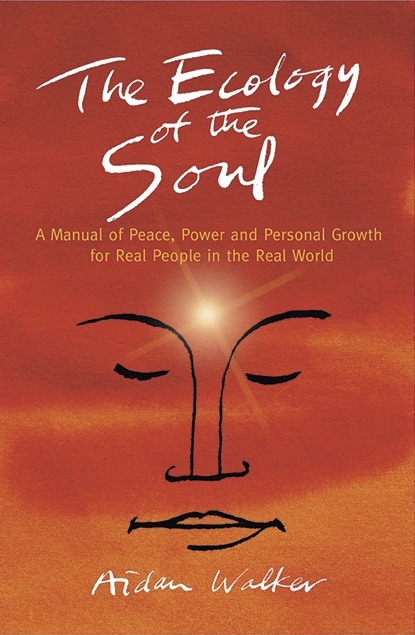Although you don’t have to practice yoga as part of the study of the Ecology of the Soul, each chapter of the book includes a detailed explanation of one of the seven asanas or positions of Surya Namaskar, the ‘Salute to the Sun’. Use it to explore one aspect of the practice of hatha yoga, which is useful and relevant to the process of balancing your internal ecology. Sooner or later we see the link between spiritual and physical health – balance – and realize the need to treat mind, body and spirit as a single interlinked system – an ecosystem. But you don’t need to commit to hours a day to benefit from these notes; in fact it’s not mandatory that you practice at all.
The reason why we are looking through yoga eyes at this point is because it gives you direct experience of mind, body and spirit, or Soul, at work interacting and affecting each other. It will help you kick-start your awareness of the energy that is your silent, powerful Self. By merely physical action, you still your mind. If you do practice yoga but only as physical exercise for health and flexibility, now’s the time to make the connection to its mental and spiritual realm and use it as a way of uplifting your consciousness. That, after all, is what it is meant for. If you study T’ai chi ch’uan, meditation or any other discipline that focuses your inner awareness, demanding and creating inner stillness, then you will already know what you are trying to do. They all have the mental/spiritual element because most of them are based on the same understanding of the subtle energy flow in the body; the same understanding which underpins Chinese medicine, the chakras and a host of other esoteric knowledge systems.
Practice one of them to know and love the difference between your physical and spiritual self, and to allow them to work in harmony with each other. Yoga happens to be the one I know, and the one from which I have learned the value of letting go. Just as you can’t force your muscles to stretch, you can only let them go, so you can’t force your mind to relax, to be still. You can only let it go.
‘Surya Namaskar’, the ‘Salute to the Sun’, is the template for a basic yoga experience, a beginner’s course if you like. Something you can do every day without completely rewriting your life. There are of course numerous versions. The one we work on here is my individual take, the result of many years of study and practice of the BKS Iyengar system of Hatha Yoga, including working with the Master himself. His Light on Yoga (HarperCollins, 2001), originally published in the 60s, is still the preeminent text for serious students. This version has seven asanas, the practice of each one of which is explained in detail at the end of each one of the ‘Power’ chapters. But some of them repeat as you go through the sequence, so there are actually twelve ‘position moments’, periods (ideally of seven deep breaths) when you are holding each asana. And when it is holding you.
As with your Magic Minute, you need to make yourself a personal, private space in the day. Unlike your Magic Minute, it needs a minimum of about five minutes. Best to try and stitch them together, steal six or seven minutes for yourself and make the two contemplative practices feed each other.
Obviously, since it’s Salute to the Sun, that five minutes ought to be first thing in the morning. You are greeting and celebrating the new day from the consciousness of your powerful, peaceful, inner Self, and it’s a great way of setting yourself up for the day, especially if you have managed to get your Magic Minute in too – but that may not be possible. Even if you get up five, ten or 15 minutes earlier it might not work. Too much rush, too many things to think about, you can’t give it the slow, contemplative attitude it needs. No matter. Find a time in the day that you can make for yourself, and do it then. Just before bed when everyone else is asleep can work very well, as long as you haven’t been partying wildly; if that’s the case, leave it out for tonight. If you do manage to fit it into your morning routine, don’t launch straight into it as you literally put your feet on the floor; go to the bathroom, brush your teeth, drink a glass of water, shake your arms and legs to warm up a bit, get yourself generally ready while keeping the quiet, inward focused state of mind.
More to come in the next posts.

